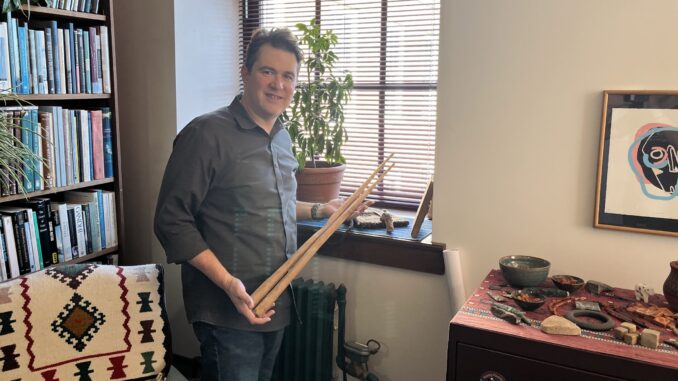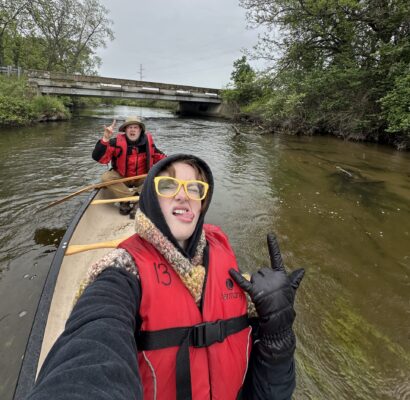
For nearly five years, Albion’s anthropology and biology departments have partnered with the Nottawaseppi Huron Band of the Potawatomi (NHBP) to form a class and program that “doesn’t exist anywhere else besides Albion,” according to associate anthropology professor Brad Chase.
According to associate professor of biology Abigail Cahill, in 2020, associate professor of anthropology Allison Harnish initiated a joint research project between the Tribal Historic Preservation office and the NHBP to “learn more about the shared history with the college.” The Anishinabe people of the NHBP were “interested in starting collaboration” with Cahill and the biology department on the research of manoomin, also known as the wild rice plant, according to Cahill.

“It was a little bit of a coincidence that I was also working on this,” Cahill said. “So these things came together.”
The Pleiad reached out to the NHBP on Oct. 31 and Nov. 10. They did not respond in time for publication.
Chase, who is also involved in the project, teaches a class called Archeology of Wild Rice in Michigan.
Cadillac sophomore and student in the class Corra Santangelo said by engaging with the project, those involved learn about the “culture and importance” of the manoomin, as well as “the archaeology, the history of the region, of the indigenous people who live there and how they exist now.”
Manoomin grows in lakes and rivers all across the Great Lakes region. Some of it grows right in Albion’s backyard on the Kalamazoo river.
“There’s about a two or three mile stretch out here that we monitor very closely so that we know how the rice is doing from year to year,” Chase said. “It was by going out together, with folks from the tribe in canoes, that we learned how to do this.”
According to Cahill, Chase’s students “often collaborate” with their peers in Cahill’s insect and invertebrate biology classes to assist with their research. However, the lessons from this class aren’t just learned in the classroom.
Charlotte Amalie, St. Thomas, U.S. Virgin Islands, senior Cloud Rimer said that she “definitely has more of an appreciation for nature” after being involved in the project.
“I did a FURSCA project this summer about wild rice, and it definitely made me slow down,” Rimer said. “Before we could even get into the river, we had rituals to do – sort of pause yourself from the business of it, and relax, take a second.”
In addition to working with the NHBP, Rimer took a course with the National Association for Interpretation and learned how to be an interpretive guide to tell people about manoomin.
“Right now, we’re planning an exhibit for the Whitehouse Nature Center, and given my background with interpretation, I find that really interesting,” Rimer said.
The exhibit will act as a museum to communicate what has been observed and learned from the class.
“People will also learn a lot about Michigan archaeology along the way,” Chase said.

Walled Lake senior Shaylyn Athayde said for her, the class ignited an “interest in archival work and working in a museum.”
There “isn’t a set end goal” for the project, but the groups will continue to work together and build strong relationships, Cahill said.
“I think the biggest real-world skill I want them to take away is communication, actually, and learning to communicate and work with NHBP partners more than anything,” Cahill said. “There’s other ways to see and understand the natural world that are equally valid and important.”
Cahill added the project helps “bring these ways of knowing things together, and that it just requires listening and thinking about science in a different way.”
The class is open to any student, regardless of major.
“I think a lot of people think about Indigenous stuff only in the past tense,” Santangelo said. “A big part of this class is engaging with history and learning how alive and relevant it is to the environment, like the good things we can do now to create change.”
Shay Athayde was a member of the Pleiad in the 2024-2025 school year.

Leave a Reply